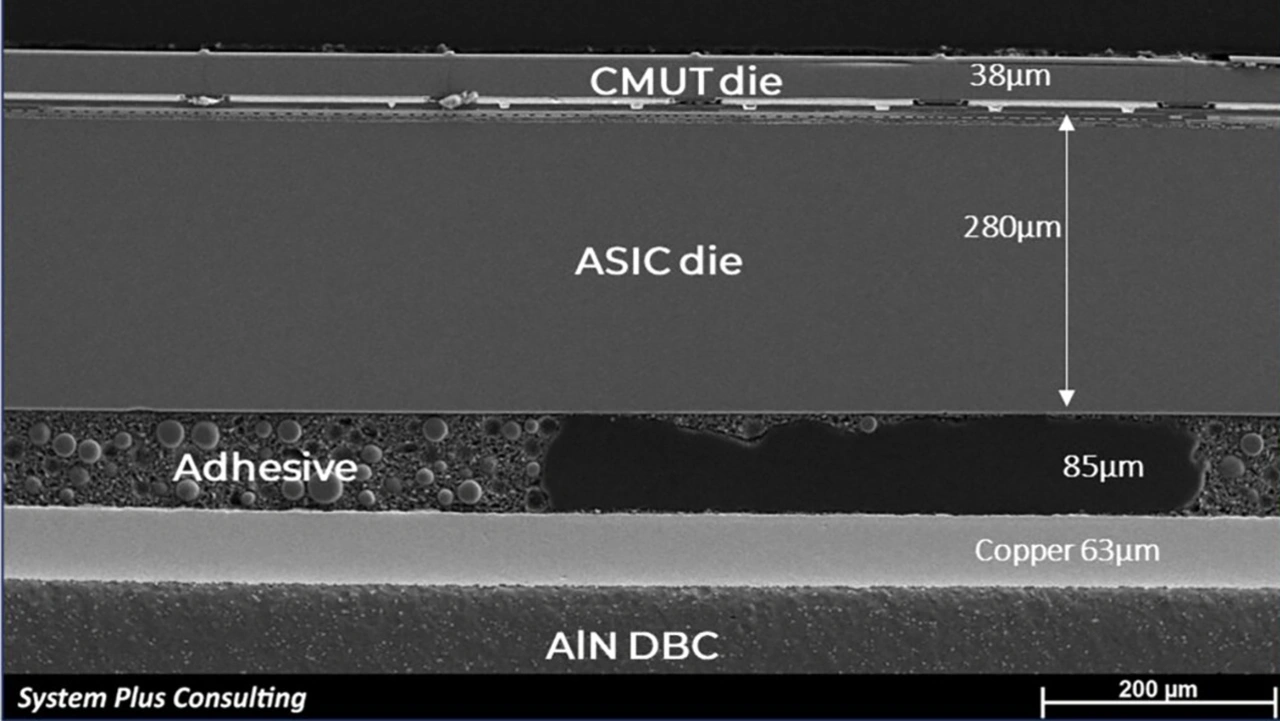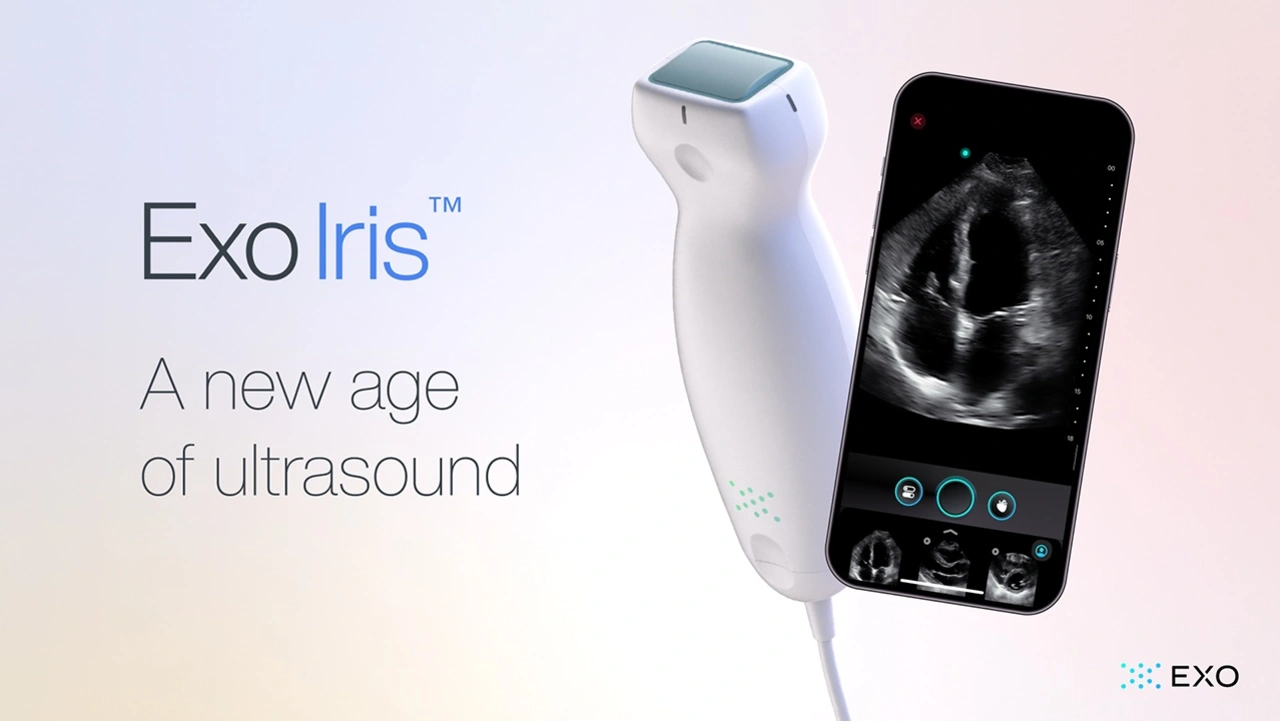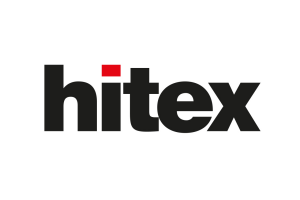Revolution in Diagnostics
Ultrasound Diagnosis: Accessible Anywhere, for Everyone
Based on low-cost, highly integrated sensor arrays, startups Butterfly Network and Exo Imaging are making ultrasound diagnosis affordable and extremely easy.
Can you imagine a doctor without a stethoscope? Many doctors use it so often that they carry it with them at all times. It has become the symbol of an entire profession. It is indispensable to the doctor because it is inexpensive and very easy to use - yet it allows the doctor to "listen" to the patient and gain valuable insights. Even if it is just to narrow down the problem and initiate further diagnostic procedures, such as an X-ray of the lungs to see more precisely what the patient's problem might be.
But until now, there have been no inexpensive imaging modalities that can be used anywhere. CTs, MRIs, and X-rays are out of the question, but ultrasound machines are complex to operate, relatively expensive, and not nearly as portable as a stethoscope.
The Ultrasound Probe Replaces the Stethoscope
That may be about to change. Burlington, Massachusetts-based startup Butterfly Network and Santa Clara-based Exo Imaging (pronounced "echo") want to replace the stethoscope with a small, inexpensive ultrasound device. Butterfly has just received FDA clearance for its latest device, the iQ3.
Ultrasound devices the size of a razor
Founded in 2011, Butterfly launched the first generation of its ultrasound devices, the "iQ," in 2018 and the second generation, the "iQ+," in 2020. The interesting thing is that the ultrasound probes are no bigger than a razor blade and can be used to examine the entire body. This means that doctors can carry the devices with them at all times - just like their stethoscopes. In Butterfly's vision, the small point-of-care ultrasound systems (POCUS) will replace the stethoscope. After all, why should doctors listen when they can see much more with relatively little effort? The ultrasound image itself can be shown on a smartphone display via an app and a cloud-based platform. The tricorder from Star Trek sends its greetings: Enterprise doctor Leonard McCoy moves his diagnostic device along a patient and immediately sees what is wrong.

Because that is the vision: to democratize ultrasound technology. In other words, to make it so affordable and easy to use that it not only finds its way into hospitals and doctors' offices, but that patients can even use it themselves at home, allowing the doctor to make a diagnosis based on the transmitted images without having to visit the patient. Most importantly, Butterfly wants to bring ultrasound technology to countries where people do not have access to ultrasound, let alone other imaging technologies.
1.5 billion dollars through SPAC deal
A potential market of $8 billion for the company's products and the prospect of significant technological breakthroughs every two to three years based on advances in semiconductor technology - this vision convinced investors: Butterfly went public in late 2020 as part of a special purpose acquisition company (SPAC) deal and was valued at $1.5 billion. The company had previously raised $400 million from investors including Baillie Gifford, the Bill and Melinda Gates Foundation, and Fosun Industrial. However, the share price has fallen steadily from a high of around $25 shortly after the SPAC deal to 90 cents recently.
The Bill & Melinda Gates Foundation was apparently particularly taken with the prospect of bringing ultrasound diagnostics to regions of the world where people have had little access to it. In the spring of 2022, for example, it gave Butterfly $5 million to equip 500 health workers in Kenya and South Africa with the iQ3+" to screen expectant mothers and their unborn children.
Sensor-Array with 8960 CMUTs
Butterfly's technology is based on CMUTs (Capacitive Micromachined Ultrasound Transducers), which generate the sound and record the echo of the reflected sound. To this end, Butterfly has integrated 8960 CMUTs on a sensor array and, according to Butterfly, has built the first ultrasound system-on-chip on this basis. This was achieved using ultrasound-on-chip technology, which allows MEMS and electronic functions such as digital signal processing to be integrated on a single chip. An ultrasound probe based on this technology is already available for less than $2,000.
Last fall, Butterfly signed a five-year agreement with Forest Neurotech to jointly develop an implantable interface IC between the human brain and electronics. Just a few days ago, Elon Musk announced that Neuralink, a company he co-founded, had successfully implanted the first such implant in a human. Butterfly and Forest Neurotech believe that Butterfly's ultrasound-on-chip technology is uniquely suited to create chips that can be implanted in the brain.

Exo Imaging relies on PMUTs
Santa Clara-based Exo Imaging was founded in 2015 with a similar vision - to replace the doctor's stethoscope in the future - and has raised more than $300 million in venture capital. Investors include Applied Ventures, a venture fund of GlaxoSmithKline, Intel Capital and TDK Ventures.
Unlike Butterfly, Exo focuses on PZT-based PMUTs (Piezoelectric Micromachined Ultrasound Transducers). According to CEO and co-founder Sandeep Akkaraju, this provides the best balance of high performance, low cost and low power for the sensors. Using this proprietary technology, Exo has realized the first integrated PMUT transducer called "Cello". It integrates 4096 PMUTs. Cello" provides much better image quality and allows physicians to see deeper into the patient's body than is possible with the small ultrasound devices currently on the market.
Integration into hospital workflow
The Exo Works" platform also allows the ultrasound systems to be integrated into the hospital management system. The platform can be accessed via a smartphone, tablet or web browser. "Exo Works" can be integrated with any POCUS device as well as with popular hospital picture archiving and communication systems (PACS). Physicians can use the platform to document, review, bill and manage quality assurance in seconds. The cloud-based platform includes tools for real-time collaboration among care teams to increase efficiency. Last year, Exo Works received the BIG Innovation Award from the Business Intelligence Group.
AI helps diagnose
Exo's real-time AI, SweepAI, helps caregivers draw the right conclusions quickly at the point of care. The company introduced Exo Iris last fall. "Taking an ultrasound image with our latest generation of devices is no more difficult than taking a picture with your cell phone," said Sandeep Akkaraju at the launch. The devices can capture images over a 150° field of view and penetrate tissue to a depth of 30 cm. This means that entire organs and even an unborn child in the womb can be observed. Exo's FDA-cleared AI tools can determine whether organs are functioning normally or if there are problems, such as whether the heart is beating properly. It can also determine a patient's bladder volume within seconds, which is a significant advancement.
"The Exo Iris costs $3,500 in the United States. According to Exo, users previously had to pay between $5,000 and $200,000 for comparable devices on the market.
Pilot project with Sana clinics
In the middle of last year, Sana Kliniken and Exo announced a cooperation to pave the way for intelligent diagnostics in ultrasound imaging. Pilot projects at the Sana clinics in Berlin Lichtenberg and Woltersdorf will test the cloud-based software and the associated ultrasound probe for usability and compatibility in everyday clinical practice. "Our two clinics are the first in Germany to test this innovative software solution," said Dr. Jens Schick, Chief Operating Officer of Sana Kliniken, when the cooperation was announced. "Our medical staff will be able to make real-time decisions in ultrasound diagnostics and treat patients more quickly, especially in critical situations."








